I “heart” the Doke tea estate.
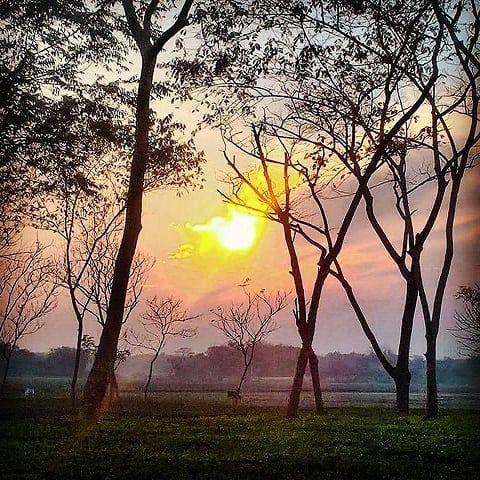
Photo by Rajiv Lochan.
No, I’m not ashamed to use the word “heart” instead of “love”. Especially today. Okay, I winced a tiny bit at the grammatical incorrectness of it (and the cutesiness of it) . . . but the sentiment still stands. And, given when this blog is going up, the cutesy incorrectness is fitting.
Full disclosure: This blog was supposed to go up a week ago. I dipped into all four of Doke’s second flush teas last week at this time. Not sure why, but I got burnt out of writing tasting notes for a moment. I had to . . . re-evaluate why I loved doing it.
Why was it I liked doing stream-of-consciousness taster notes on teas that I loved? Why did I rarely cover teas that were merely okay? What was the point of it all? That bit of navel-gazing took a week, and when I was quite confident enough in my “heart”, it just so happened . . . to be on Valentine’s Day. (Or Singles Awareness Day to the un-paired.)
At this point, I don’t think I need to tell you all what the Doke Tea Estate is. I’ve written about it over ten times, now. This last summer, I covered all of their first flush teas for 2016. In early December, I finally ran out of my supply of Doke Black Fusion, and I informed the garden’s owner—Rajiv Lochan—that I would be purchasing more in a week.
He gave me the proverbial, “Your money is no good here.” And a package was at my doorstep a week later, courtesy of Rajiv’s son—Vivek.
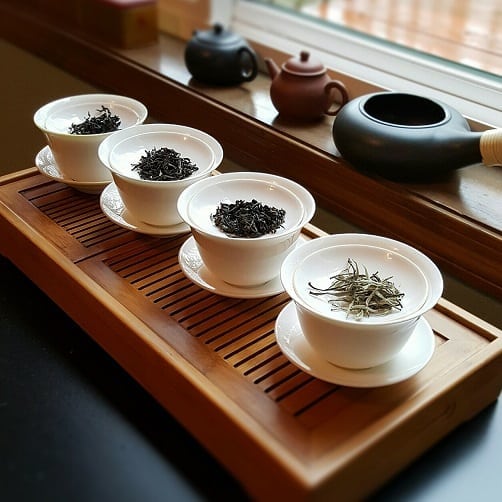
In said package were two autumnal Darjeelings and all four of Doke’s second flush teas. For those not in the know, “second flush” refers to the plucking time between late-May and late-July. Principally, the ideal time for getting the full-flavored leaves from tea plants. I’ve had Doke second flush teas before . . . but not all at once, nor in one sitting.
Last Tuesday, I dove in.
Of the four teas, Black Fusion was the one I had the most experience with. Particularly when it came to the different seasonal variants. Over the years, I’ve sampled—I would say—all of the seasonal flushes of this tea; even a rare autumnal/winter version. In other words, I sort of knew what to expect.
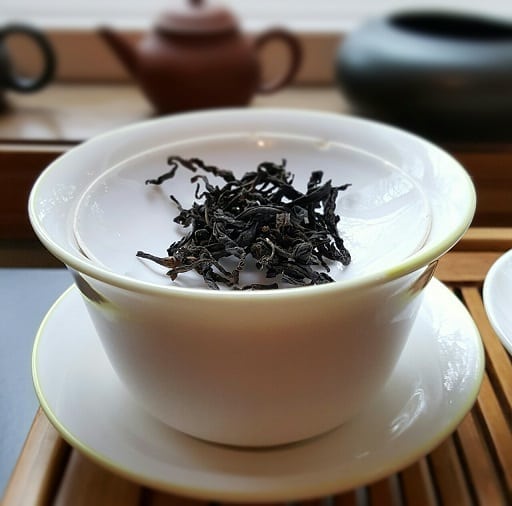
As with past iterations, this June/July batch was far subtler and nuanced than the first flush. The honey-nut-spice leanings of the aroma were dialed back, but still noticeably pleasant. What differed this year was the leaf-rolling. Past second flushes had larger, more open, wilder-looking leaves. These were rolled quite a bit like the first flush. It seemed like they were aiming for a bit more uniformity this year.
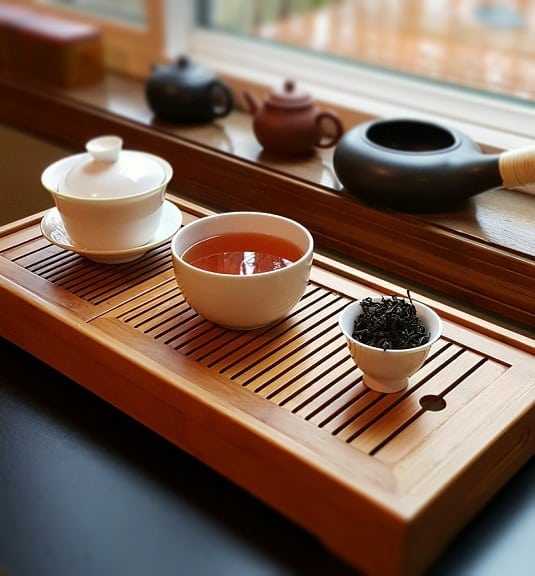
The liquor brewed up to a soft red velvet color, similar to how the first flush had. However, unlike spring’s offering, the aroma was markedly different. The usual honey-nut-spice scent trifecta was there, but it was somehow . . . toastier. Like toasted macadamias lathered in burnt date sugar. It wasn’t nearly as fruity a smell as last time, either. On taste, it had honey and nuts on the intro, toasty brilliance in the middle, and a finish of finely cut almonds and honey-mustard-lathered salad croutons.
I was a little surprised by this year’s Rolling Thunder. In years past, it looked quite similar to the Black Fusion in leaf appearance, save for being lighter in color, and the size of the leaf-cut. This year, the leaves were cut smaller, and—while still dark in appearance—they didn’t look nearly as heavily oxidized as the first flush version. The leaf aroma also gave that impression, imparting a more Darjeeling muscatel scent. I never ran into that with an assamica based tea.
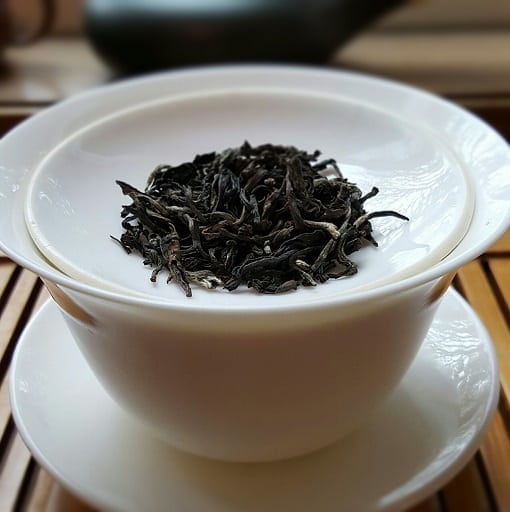
And speaking of assamica . . .
The liquor brewed up darker than any “oolong” I’ve ever seen. Cherrywood red with an aroma of malt and mulled wine. Guys . . . this looked and smelled like a straight-up Assam black tea. However, I didn’t pick up on any tannins in the whiff. Some of that came due in the taste, the front was a little bitter and astringent, but I chocked that up to the three-minute steep time.
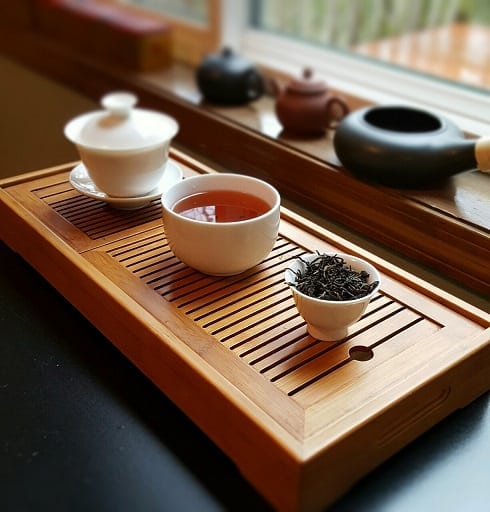
After the intro, though, it was all fermented fruits and chocolate malt. Tiramisu! Yeah, that’s what I tasted in the top note. There was a bit of honey on the finish, but most of it was straight-up malt. I think the smaller leaf cut and heavier oxidation played significant roles in this change; a very different beast from the first flush. Emphasis on the “beast”.
I can’t say there was much of a change between the first and second flush impressions of last year. The leaves were rolled very similarly as the first flush, and the smell of salt, spice and grass was near-identical. If I noticed any differences, it was that the leaves looked even darker than usual. Extended kill-green by way of pan-frying, maybe?
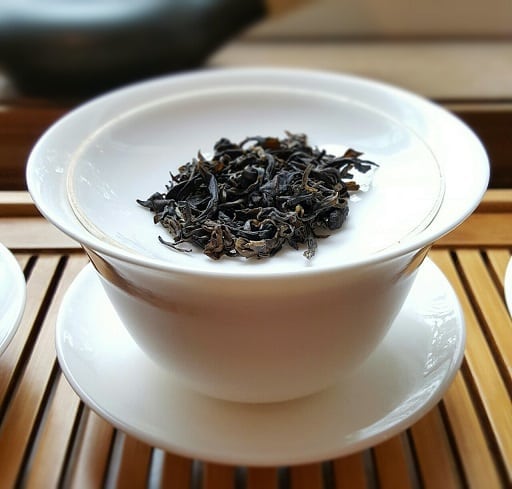
The liquor brewed up . . . dark . . . amber? Wait, what?
I may have over-brewed it. I took a sip
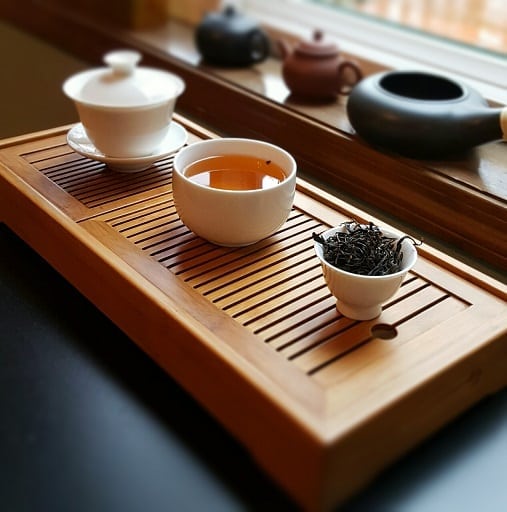
WAY too bitter. Nigh on undrinkable. I decided to give it a second go, but I dialed the water temp down by 5 degrees and the steep time by forty-five seconds.
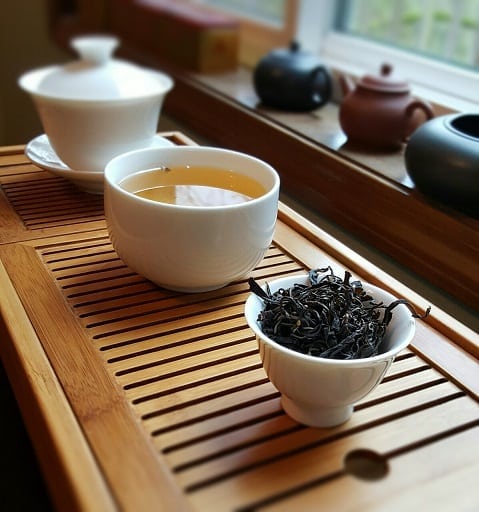
The results were more favorable . . . but still not great. Instead of instantly bitter, the brew was instantly grassy. And it didn’t deviate from that throughout the sip. If there were any nuances, I couldn’t find them. It kills me to say that, especially of a garden I adore. But . . . yeah . . . this version of their signature green—in its second flush form— was merely okay. Green teas made from assamica tea bushes are always hit or miss.
And, finally, the gem of the lot, Doke’s Silver Needle. The leaf buds of 2016 were longer and less uniform than years prior, but that somehow led to a fruitier brew overall. This year’s summer batch smelled of sweetness, spice and raw honey made from wildflowers. The usual melon notes were somewhat dialed back to make room for more the honey tones . . . and I didn’t mind one darn bit.

The liquor brewed up pale yellow, pretty typical of a white tea. But the aroma was loud and clear . . . not so typical of a white tea. Well, this was new. Usually, with Doke whites of yonder-brew, I whiffed melons, spices of unknown origin, and other fanciful things. This time? Straight honey. Honey made from bees that only fed on honeysuckle bulbs. The taste? Same thing, freakin’ honey! This tasted like a Bai Mu Dan that’d been aged for three-to-five years. It was smooth, creamy, sweet at the top, velvety on the trail-off. I just . . . wanted to lather my face in a bowl of it.
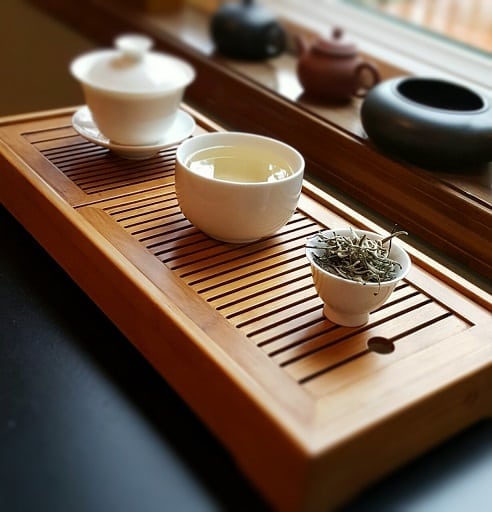
My favorite? Well . . . this is a surprise. Following the initial tasting session, I kept prepping my travel mug with this.
Doke Rolling Thunder.
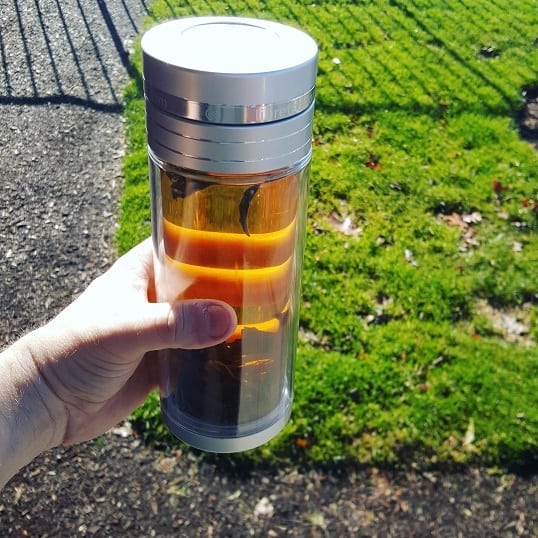
I kept going back to it over and over all last week. It had the right amount of nuance and burly wake-me-up, morning bear-hug. Rolling Thunder has always been good, but it never surpassed Black Fusion as my favorite. No matter the seasonal flush. All of them—save last summer’s Green Diamond—were grand examples of what the estate still offers.
So, it is truly fitting that my Valentine this year . . . is a tea garden.
I can think of much worse things.
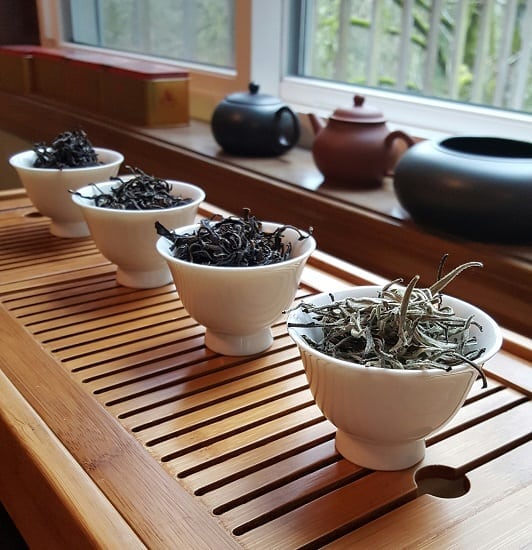
For more information on the Doke tea garden, go HERE.
To buy their teas, go HERE.

Xavier
It seems you had quite an experience with it and being able to test different teas from the same garden is always something interesting.
lazyliteratus
I think so.
Lord Devotea
Always a great experience to go the full set of Doke.
lazyliteratus
I’ve only done it twice, now.
Notes on Tea
Tea garden as Valentine — few better things. 🙂
lazyliteratus
It’s a very amicable relationship.
Margo Hutchinson
Looks mystical.
lazyliteratus
Someday I’ll find out.